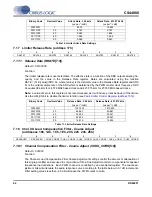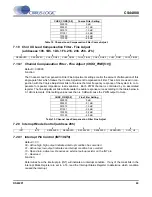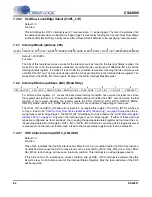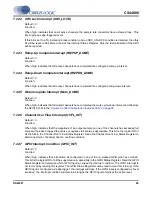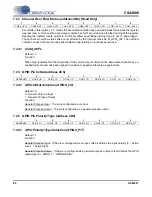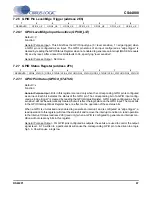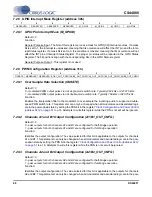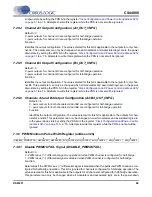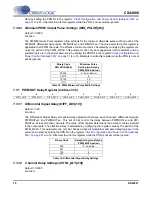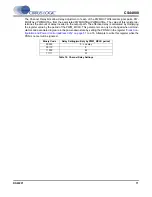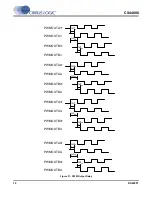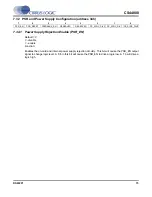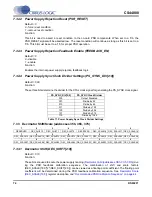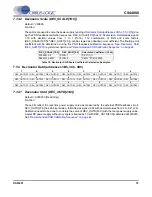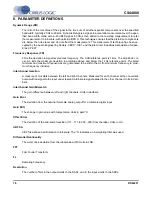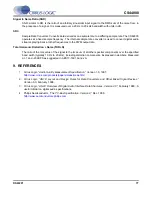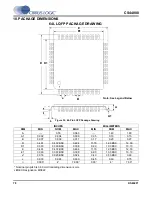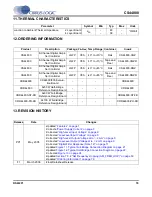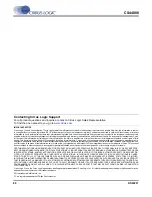
76
DS632F1
CS44800
8. PARAMETER DEFINITIONS
Dynamic Range (DR)
The ratio of the rms value of the signal to the rms sum of all other spectral components over the specified
bandwidth, typically 20 Hz to 20 kHz. Dynamic Range is a signal-to-noise ratio measurement over the spec-
ified band width made with a -60 dBFS signal. 60 dB is then added to the resulting measurement to refer
the measurement to full-scale, with units in dB FS A. This technique ensures that the distortion components
are below the noise level and do not effect the measurement. This measurement technique has been ac-
cepted by the Audio Engineering Society, AES17-1991, and the Electronic Industries Association of Japan,
EIAJ CP-307.
Frequency Response (FR)
FR is the deviation in signal level verses frequency. The 0 dB reference point is 1 kHz. The amplitude cor-
ner, Ac, lists the maximum deviation in amplitude above and below the 1 kHz reference point. The listed
minimum and maximum frequencies are guaranteed to be within the Ac from minimum frequency to maxi-
mum frequency inclusive.
Interchannel Isolation
A measure of crosstalk between the left and right channels. Measured for each channel at the converter's
output with no signal to the input under test and a full-scale signal applied to the other channel. Units in deci-
bels.
Interchannel Gain Mismatch
The gain difference between left and right channels. Units in decibels.
Gain Error
The deviation from the nominal full-scale analog output for a full-scale digital input.
Gain Drift
The change in gain value with temperature. Units in ppm/°C.
Offset Error
The deviation of the mid-scale transition (111...111 to 000...000) from the ideal. Units in mV.
dB FS A
dB FS is defined as dB relative to full-scale. The “A” indicates an A weighting filter was used.
Differential Nonlinearity
The worst case deviation from the ideal code width. Units in LSB.
FFT
Fast Fourier Transform.
Fs
Sampling Frequency.
Resolution
The number of bits in the output words to the DACs, and in the input words to the ADCs.

